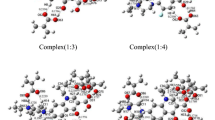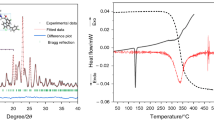Summary
Artificial neural network (ANN) implementing the back-propagation algorithm was applied for the calculation of the imprinting factors (IF) of molecularly imprinted polymers (MIP) as a function of the computed molecular descriptors of template and functional monomer molecules and mobile phase descriptors. The dataset used in our study were obtained from the literature and classified into two distinctive datasets on the basis of the polymer’s morphology, irregularly sized MIP and uniformly sized MIP datasets. Results revealed that artificial neural network was able to perform well on datasets derived from uniformly sized MIP (n=23, r=0.946, RMS=2.944) while performing poorly on datasets derived from irregularly sized MIP (n=75, r=0.382, RMS=6.123). The superior performance of the uniformly sized MIP dataset over the irregularly sized MIP dataset could be attributed to its more predictable nature owing to the consistency of MIP particles, uniform number and association constant of binding sites, and minimal deviation of the imprinted polymers. The ability to predict the imprinting factor of imprinted polymer prior to performing actual experimental work provide great insights on the feasibility of the interaction between template-functional monomer pairs.
Similar content being viewed by others
Abbreviations
- MIP:
-
molecularly imprinted polymer
- NIP:
-
non-imprinted polymer
- IF:
-
imprinting factor
- RMS:
-
root mean square error
References
Ye L., Mosbach K., (2001) J. Incl. Phenom. Macrocycl. Chem. 41:107
Dobashi A., Nishida S., Kurata K., Hamada M., (2002) Anal. Sci. 18:35
Lin T.Y., Hu C.H., Chou T.C., (2004) Biosens. Bioelectron. 20:75
Piacham T., Josell Å., Arwin H., Prachayasittikul V., Ye L., (2005) Anal. Chim. Acta, 536:191
Vlatakis G., Anderson L.I., Muller R., Mosbach K., (1993) Nature 361:645
Piacham, T., Isarankura Na Ayudhya, C., Prachayasittikul, V., Bülow, L. and Ye, L., Chem. Commun., (2003) 1254
Mosbach K., Yu Y., Andersch J., Ye L., (2001) J. Am. Chem. Soc. 123:12420
Sellergren B., Lepistoe M., Mosbach K., (1988) Am. Chem. Soc. 110:5853
Duffy D.J., Das K., Hsu S.L., Penelle J., Rotello V.M., Stidham H.D., (2000) Polym. Mat. Sci. Eng., 82:69
Nicholls I.A., Adbo K., Andersson H.S., Andersson P.O., Ankarloo J., Hedin-Dahlstrom J., Jokela P., Karlsson J.G., Olofsson L., Rosengren J., (2001) Anal. Chim. Acta 435:9
Chianella I., Lotierzo M., Piletsky S.A., Tothill I.E., Chen B., Karim K., Turner A.P., (2002) Anal. Chem. 74:1288
Subrahmanyam S., Piletsky S.A., Piletska E.V., Chen B., Karim K., Turner A.P., (2001) Biosens. Bioelectron. 16:631
Piletsky S.A., Karim K., Piletska E.V., Day C.J., Freebairn K.W., Legge C., Turner A.P., (2001) Analyst 126:1826
Wu L., Li Y., (2004) J. Mol. Recognit. 17:567
Wu L., Sun B., Li Y., Chang W., (2003) Analyst 128:944
Pérez-Moral N., Mayes A.G., (2004). Anal. Chim. Acta 504:15
MARVIN, Version 3.5.4, ChemAxon Ltd., Budapest, Hungary, http://www.chemaxon.com/marvin
RECON, Version 5.5, Rensselaer Polytechnic Institute, Troy, New York, USA, http://www.chem.rpi.edu/chemweb/recondoc
Breneman C.M., Rhem M., (1997). Comput. Chem. 18:182
Breneman C.M., Thompson T.R., Rhem M., Dung M., (1995) Comput. Chem. 19:161
Lide D.R., 1990 CRC Handbook of Chemistry and Physics: A Ready-Reference Book of Chemical and Physical Data 71st ed., CRC Press, Inc. Florida
Dumanovic D., Kosanovic D.J., Arkakovic D., Jovanovic J., (1992). Pharmazie 47:603
Chien Y.W., (1984) J. Parenter. Sci. Technol. 38:32
Prakongpan S., Nagai T., (1984). Chem. Pharm. Bull. 32:340
McNaught, A.D. and Wilkinson, A., IUPAC Compendium of Chemical Terminology, 2nd ed., http://www.iupac.org/goldbook/I03180.pdf
Whitley D.C., Ford M.G., Livingstone D.J., (2000) J. Chem. Inf. Comput. Sci. 40:1160
Niculescu S.P., (2003) J. Mol. Struct., 622:71
Agatonovic-Kustrin S., Zecevic M., Zivanovic L., (1999) J. Pharm. Biomed. Anal. 21:95
Zupan J., Gasteiger J., 1999. Neural Networks in Chemistry and Drug Design, 2nd ed., Wiley-VCH Weinheim
Witten I.H., Frank E., 2000 Data Mining: Practical Machine Learning Tools and Techniques with Java Implementations Morgan Kaufmann Publishers San Francisco
Zhang R., Yan A., Liu M., Liu H., Hu Z., (1999) Chemometr. Intell. Lab. Syst. 45:113
Loukas Y.L., (2000) J. Chromatogr. A 904:119
Pérez-Moral N., Mayes A.G., (2001) Bioseparation 10:287
Cacho C., Turiel E., Martin-Esteban A., Pérez-Conde C., Cámara C., (2004) J. Chromatogr. B 802:347
Tamayo F.G., Casillas J.L., Martin-Esteban A., (2003) Analyst 128:137
Baggiani, C., Baravalle, P., Anfossi, L. and Tozzi, C., Anal. Chim. Acta, 542 (2005) 125
Mayes A.G., 2001. Polymerisation techniques for the formation of imprinted beads In: Sellergren B., (Eds) Molecularly Imprinted Polymers: Man-made Mimics of Antibodies and their Applications in Analytical Chemistry (Chapter 12) Elsevier, Amsterdam pp. 305–324
Fu Q., Sanbe H., Kagawa C., Kunimoto K.K., Hagina, (2003) J. Anal. Chem. 75:191
Lai J.P., Cao X.F., Wang X.L., He X.W., (2002) Anal. Bioanal. Chem. 372:391
Haginaka J., Kagawa C., (2003) Anal. Sci. 19:39
Haginaka J., Kagawa C., (2002) J. Chromatogr. A 948:77
Umpleby R.J. II, Baxter S.C., Rampey A.M., Rushton G.T., Chen Y., Shimizu K.D., (2004) J. Chromatogr. B 804:141
Acknowledgements
C.N. is grateful for the Royal Golden Jubilee Ph.D. Scholarship under V.P. supervision from The Thailand Research Fund. This project was also partially supported by the Thailand Toray Science Foundation (TTSF) and a grant from the annual budget of Mahidol University (B.E.2548).
Author information
Authors and Affiliations
Corresponding author
Rights and permissions
About this article
Cite this article
Nantasenamat, C., Naenna, T., Ayudhya, C.I.N. et al. Quantitative prediction of imprinting factor of molecularly imprinted polymers by artificial neural network. J Comput Aided Mol Des 19, 509–524 (2005). https://doi.org/10.1007/s10822-005-9004-4
Received:
Accepted:
Published:
Issue Date:
DOI: https://doi.org/10.1007/s10822-005-9004-4




